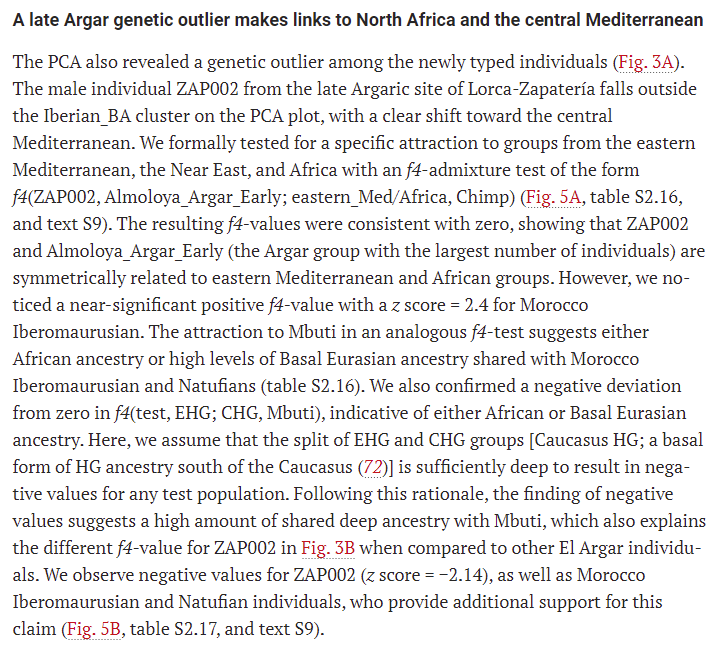Copper to Bronze Age Iberia paper discusses the apparent late 4th or early 3rd millennium BC migrations that spread Zagrosian-like (aka Iran_Neolithic or Ganj_Dareh) ancestry around the Mediterranean. Interestingly they explicitly exclude Minoan origin. science.org/doi/10.1126/sc… 







In supplement they guess that ancestry might be from Italian groups. Would have to be southern Italy origin if they are right since Etruscans didn't have the Zagrosian-like ancestry: 
https://twitter.com/Peter_Nimitz/status/1442350837682950147?s=20

While Indo-European male lineages (R1b-P312) in Iberia almost completely replaced of those of their predecessors, about the same number of men & women migrated to Iberia during the invasion(s) in the 23rd century BC. 





More evidence confirming that Thucydides was right, and that the Sicanians were from Iberia - their men have same haplogroup lineage: 
https://twitter.com/Peter_Nimitz/status/1450939066766168065?s=20

ZAP002 was foreign man from ~1750-1550 BC & was buried with locals in Almeria. He had ancestry characteristic of N Africa in addition to Indo-European & Mediterranean (Sicilian? S Italian?) EEF ancestry. More evidence for IE migration to N Africa. 


https://twitter.com/Peter_Nimitz/status/1406128176296644609?s=20



• • •
Missing some Tweet in this thread? You can try to
force a refresh







































